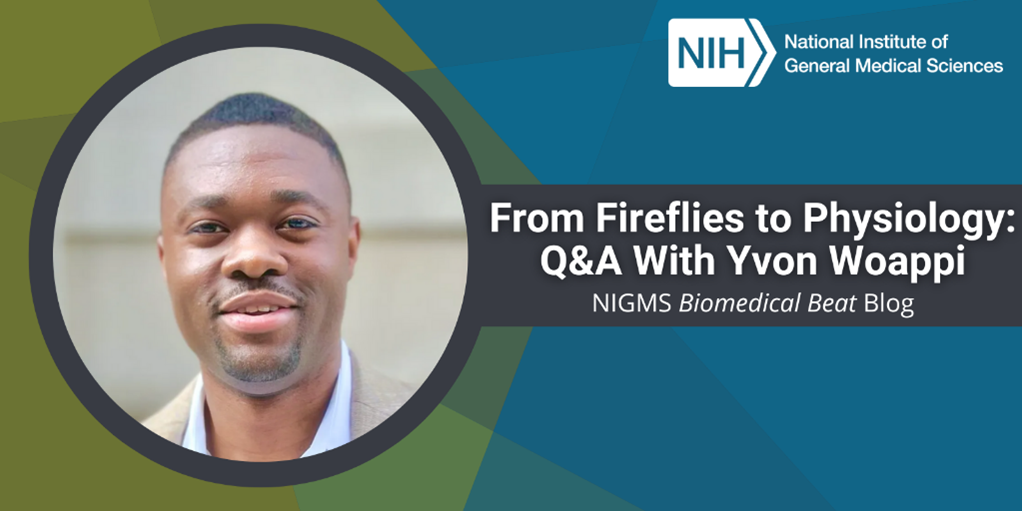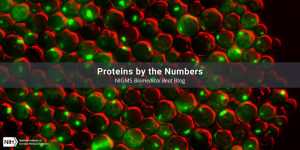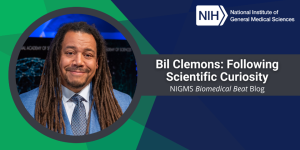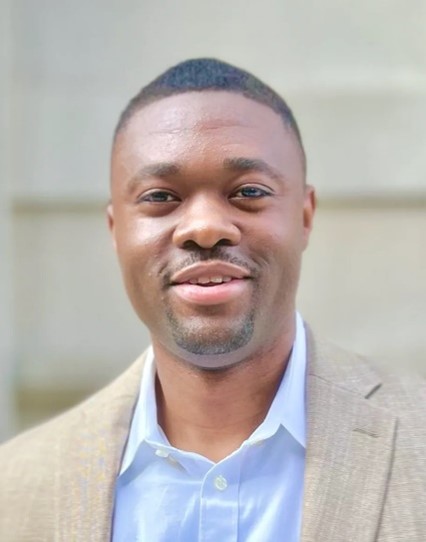
“In high school, one of my teachers encouraged me to take an advanced biology class, and I’m so glad I did,” says Yvon Woappi, Ph.D. “The class opened my eyes to the fact that there were other people who loved nature like I did—they’re called biologists!” Now, Dr. Woappi is an assistant professor of physiology and cellular biophysics at Columbia University in New York City. We talked with him about his early love of nature and the night sky, the support he received from NIGMS training programs, and his research on wound healing.
Get to Know Dr. Woappi
- Coffee or tea? Tea
- Favorite music genre? Makossa, which originated in Douala, Cameroon
- Cats or dogs? Cats
- Rainy or sunny? Rainy
- Ocean or lake? Ocean
- Childhood dream job? Painter
- Favorite hobby? Chess
- Favorite lab tool? Fluorescent microscope
- Favorite pipette size? 100 microliters
- A scientist (past or present) you’d like to meet? Jonas Salk (who developed a safe and effective polio vaccine)
Q: How did you first become interested in science?
A: Growing up in Douala, Cameroon, I always had an innate sense of curiosity about the natural world. My family and I spent a lot of time in local parks around my house, and I found myself drawn to different creatures, like snails and fireflies. The living world fascinated me.
My father studied physics and computer science, so we sometimes talked about those topics. I especially loved talking to him about astrophysics because I was captivated by the heavens—the stars, the moon, and the sun. We could see the stars very clearly in the night sky in Douala; it reminded me of a field of fireflies.
Q: What steps did you take on your educational and career path?
A: When I was 12 years old, my family and I moved to the United States because it offered my siblings and me better educational opportunities. I had to learn a new language and adapt to a new school system, but one aspect that remained the same was my passion for biology. I took the advanced biology course in high school that my teacher recommended, and it cemented my desire to study biology professionally and made me realize that there was a community of like-minded people out there that I could join. During this time, I also had my first research experience. I studied the effects of carbon dioxide on sleep in fruit flies, a commonly used research organism.
I went on to study biology at the University of Pittsburgh in Bradford, Pennsylvania. I joined a lab and worked on a project to identify new antimicrobial substances from soil. We collected soil samples, cultured the bacterial strains growing inside, and then did experiments to learn if the bacteria produced any substances that blocked the growth of other bacterial species. It was a great experience, and I was able to publish three papers on the work.
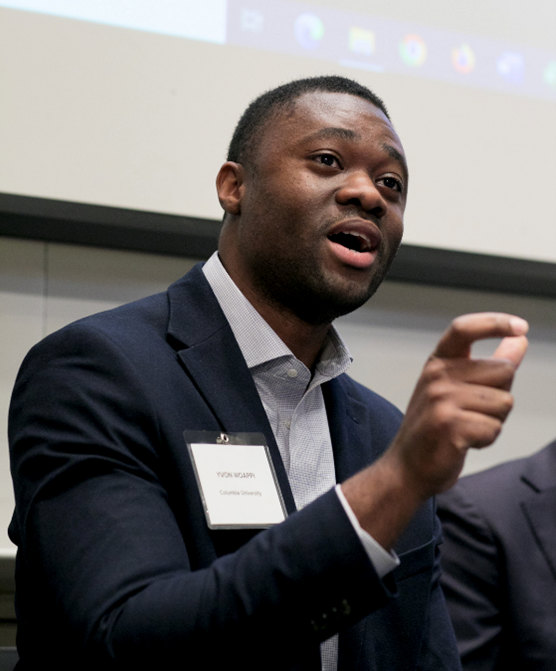
From there, I applied to the Postbaccalaureate Research Education Program (PREP) at the University of South Carolina (UofSC) in Columbia. The goal of this NIGMS-funded program is to develop a diverse pool of well-trained students who will transition into biomedical research-focused doctoral degree programs. Through PREP, I joined the research lab of Lucia Pirisi-Creek, M.D., and took graduate-level classes, all while earning a stipend. PREP at UofSC was probably the most impactful experience I had during my training because it paved the path for me to become a Ph.D. student.
My experience in Dr. Pirisi-Creek’s lab was so great that I decided to stay for my Ph.D. work. Her lab studied viral oncogenesis, which is the process by which viruses, like human papillomavirus (HPV), can cause cancer in humans. I developed a 3D model of human skin in culture to study infection. The model contained both typical skin cells and stem cells, which are specialized cells that regenerate easily and can develop into many different cell types. Using the model, I learned that the tumors that oncogenic viruses cause usually arise from stem cell-like skin cells, rarely from differentiated skin cells. This knowledge could help doctors identify patients who are more likely to develop tumors after HPV infection.
After grad school, I started a postdoctoral position (postdoc) at Harvard Medical School in Boston under the mentorship of Thomas Kupper,
M.D., and Matthew Ramsey, Ph.D. During that time, I applied for and was awarded a grant through the NIGMS Maximizing Opportunities for Scientific and Academic Independent Careers (MOSAIC) program, which is designed to facilitate the transition of researchers from postdocs to independent faculty positions. My grant proposed using genetic techniques to alter stem cells in the skin to boost wound healing and regeneration.
One great thing about the MOSAIC program is that you can take your funding with you to your next institution, which led to many cell biology and dermatology departments across the country reaching out with job offers. After a few interviews, I decided to start my lab at Columbia University.
Q: What does your lab study?
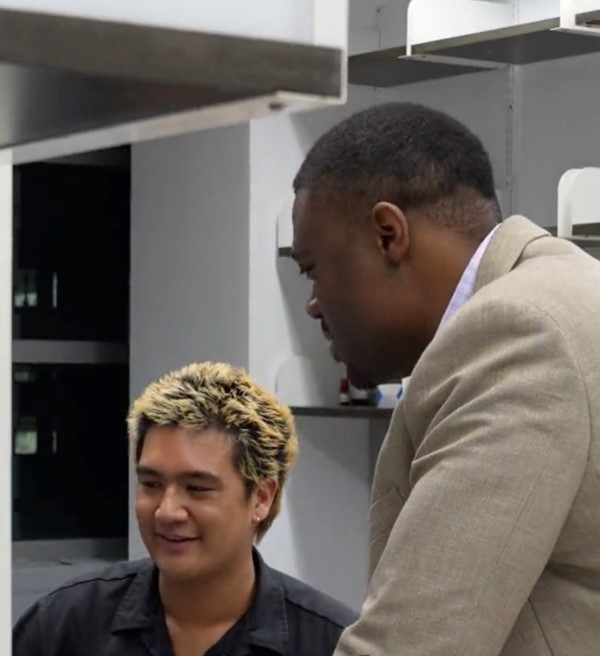
A: My lab is continuing the work I started in my postdoc to learn how to redirect cells in the skin toward a better regenerative state, which could help heal large injuries and even regenerate organ parts. One special piece of this study is that we have continued to use the same 3D human skin model that I developed as a PREP student. We’ve added more cell types to the model to better mimic the skin’s response to injury, but at its core, it’s the same system.
Q: Where do you plan to take your research next?
A: The skin interacts with many cell types and structures—neurons, blood vessels, and stem cells are only a few—and we have to learn how all of them are involved in wound healing to fully understand the process. We’re currently building a molecular atlas of the wound healing process by performing single-cell RNA sequencing on the various cell types present throughout the skin, which gives us a snapshot of the RNA molecules they make and clues to their activity. We take these measurements before injury, during repair, and after healing to assess the whole process. Our ultimate goal is to produce this atlas and then use the information to help patients with severe tissue injuries, like a deep burn or an amputation.
Q: What challenges did you face in your career journey, and how did they shape you?
A: There have been many, but I think the biggest has been my own self-doubt. I remember when I first started out as a PREP student, everything in the lab—from the shelves of chemicals or beakers to the scientific notations—was intimidating. But I reminded myself that other people had been in my same position and succeeded, so I could too. By the end of the year, I was very comfortable in the lab setting—I knew what the chemicals did and what the beakers were used for.
Self-doubt is something I still have to overcome sometimes. Big ideas can be intimidating, and that’s usually when the self-doubt creeps in. One saying that my wife and I repeat all the time is: “Never bet against yourself.” And to us it means to never walk away from a dream or big idea because of the fear that you won’t be successful or that it’s not good enough. Instead, I strive to plan it out, get the resources needed to achieve that vision, and make it happen.
Q: In your opinion, what makes a career in science exciting?
A: I always tell my students how exciting it is to have the opportunity, privilege, and responsibility to create the future. You will make discoveries that will help humanity, and I get really motivated by that fact.
Dr. Woappi’s research is supported by the NIGMS MOSAIC program through grant R00GM140262. PREP at UofSC is supported by NIGMS through grant R25GM066526.


